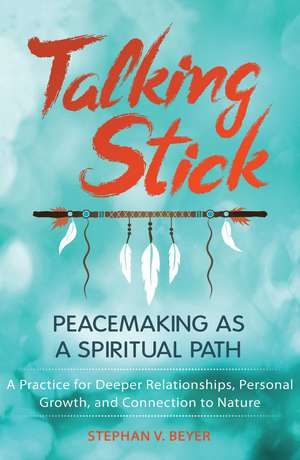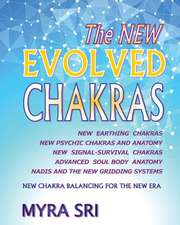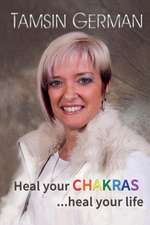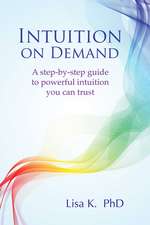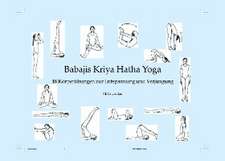Talking Stick: Peacemaking as a Spiritual Path
Autor Stephan V. Beyeren Limba Engleză Paperback – 24 aug 2016
People are afraid of conflict: it is something “bad” that must be managed and resolved. In the face of conflict we focus only on facts--who’s at fault and who should be punished--rather than seeking to restore harmony. But conflict is inevitable and presents an opportunity to establish deeper connections with others. By learning to speak honestly and listen devoutly, we can overcome our culture’s hierarchical and punitive approach to conflict. We can learn to relate to each other in a sacred manner and create relationships and communities that are egalitarian, liberating, and transformational.
Revealing that we are all peacemakers at heart, Steve Beyer details how to approach life with a listening heart and create a safe and sacred space for communication: the peacemaking circle, centered on the talking stick. Whoever holds the talking stick gets to speak. There are no interruptions, no questions, no challenges, no comments. People speak one at a time, honestly from their hearts, and they listen devoutly with their hearts to each person who speaks. And, as Beyer shows, the effect can be miraculous.
Exploring the shamanic roots of the talking stick practice, the author extends the lessons of the healing circle and the listening heart from our homes, schools, and communities into our relationship to spirit and the Earth.
Revealing that we are all peacemakers at heart, Steve Beyer details how to approach life with a listening heart and create a safe and sacred space for communication: the peacemaking circle, centered on the talking stick. Whoever holds the talking stick gets to speak. There are no interruptions, no questions, no challenges, no comments. People speak one at a time, honestly from their hearts, and they listen devoutly with their hearts to each person who speaks. And, as Beyer shows, the effect can be miraculous.
Exploring the shamanic roots of the talking stick practice, the author extends the lessons of the healing circle and the listening heart from our homes, schools, and communities into our relationship to spirit and the Earth.
Preț: 86.21 lei
Nou
Puncte Express: 129
Preț estimativ în valută:
16.50€ • 17.93$ • 13.87£
16.50€ • 17.93$ • 13.87£
Carte disponibilă
Livrare economică 31 martie-14 aprilie
Preluare comenzi: 021 569.72.76
Specificații
ISBN-13: 9781591432579
ISBN-10: 159143257X
Pagini: 192
Dimensiuni: 137 x 210 x 20 mm
Greutate: 0.23 kg
Editura: Inner Traditions/Bear & Company
Colecția Bear & Company
ISBN-10: 159143257X
Pagini: 192
Dimensiuni: 137 x 210 x 20 mm
Greutate: 0.23 kg
Editura: Inner Traditions/Bear & Company
Colecția Bear & Company
Notă biografică
Stephan V. Beyer, Ph.D., J.D., is a well-known writer and speaker on shamanism and spirituality. He is also a community builder, peacemaker, and carrier of council. He has been trained and certified in many areas of circle processes, mediation, and nonviolence and has offered peacemaking workshops to a wide variety of audiences, from therapists to theologians, and at Montessori, charter, alternative, and public schools. He has served as a Lecturer in the Department of Criminal Justice at Chicago State University, teaching undergraduate courses and graduate seminars in restorative justice and in the theory and practice of nonviolent resistance. He lives in Chicago.
Extras
Chapter 3
The Components of Council
CIRCLE
There are three simple things that make council special as a way of meeting together, making decisions, solving problems, dealing with conflicts, and building community.
Sitting in a circle
Beginning and ending with a ceremony
Using a talking stick
Sitting in a circle is the first of these. There are practical reasons for sitting in a circle. Everyone can see everyone else. No one is in front, and no one can hide in the back. But the circle is symbolic as well. The circle indicates the equality of all who sit together. There is no head of the table. Everyone’s voice carries as much weight as the voice of everyone else. Everyone is out front, equally accountable for their words.
The world is filled with circles. The sun is a circle; the moon becomes a circle over and over again--that is, in a cycle, a circle. For most of our history, humans have lived, not in the square sharp-cornered containers in which we live now, but rather in circular houses, often explicitly homologized to a circular cosmos. The year and its seasons go in a circle. Our lives go in a circle. We all follow in the footsteps of our elders and teachers who have gone before us; I am getting old now, but I have grandchildren who are coming after me.
And the circle binds us to our ancestors. Whoever you are, wherever your people came from, whatever the color of your skin, your ancestors sat in a circle to meet together, make decisions, solve problems, deal with conflicts, and sing the songs and tell the stories that sustained and nurtured their communities.
Most important, sitting in a circle creates a special space--a safe space, what many indigenous people would call a sacred space. The council circle takes place in a special space that differs from our ordinary space. In the sacred space of council it is possible to speak honestly without embarrassment; it is a place where confidences are kept; it is where decisions are made and peacemaking takes place. This is the space inside the circle, within which people listen to each other devoutly and give each other the courage to speak honestly from their hearts. This space is very different from the space outside the circle--a space where people interrupt each other, do not listen to each other, are rude to each other.
The next time you attend a meeting--a business meeting for example--observe how people behave. People arrive with their opinions already formed, and may carry with them notes of their talking points, so that they do not forget to say something they think is important. People interrupt each other. People shift about impatiently while others are speaking.
People do not pause after someone has finished speaking, to show that they are thinking about what that person has said. Instead, people start speaking immediately after someone has finished--indeed, not just when someone has finished, but even when someone simply pauses to take a breath or think about what to say next. The loudest or most aggressive talkers dominate the meeting; shy people may get no opportunity to speak at all.
That is how people act out there, outside the sacred circle. But inside the council circle, where we can all see each other, where we take turns speaking, we create a space that is filled with respect and receptivity for what everyone has to say. Inside this circle, we create a sacred space--a space that is safe for speaking, because it is a space for listening. Take a deep breath. Inside the circle, we are home.
There are a number of ways to demarcate the separate and sacred nature of the council space. The council may be held in a special place--a grove of trees, by the bank of a river, on top of a large rock, in a cave. A number of classrooms that use council have a peace table in one corner. This special place for peacemaking might also have a way of marking the number of times that the place has seen friendships renewed and breaches healed--marks on a stick, a pile of stones--that makes the table into a place of power.
In a circle, too, the gaze of all the participants is naturally oriented not only toward whoever is speaking but also toward the center of the circle. The sacred nature of the circle can be enhanced by making an altar or council table at the center. Making the altar can be a rotating responsibility among the participants, or the altar can be made by those who are moved to do so on any particular occasion. Again, there are numerous variations. The altar can contain flowers, stones, fallen leaves, feathers, or branches that have been gathered before the council. An altar of special significance can be made by each participant placing in the center an object that has personal meaning or that symbolizes the issues to be discussed at council.
Or, again, if council is held outdoors and especially for evening councils, the center can be marked by a fire--not the cooking fire, but a special and separate fire. There is something primal about sharing the warmth and light of a fire in the darkness. The glowing fire, the sense of safety, the intimacy and privacy of the darkness seem to lead people to share more of their secret selves than they might do in the harsher daylight. The fire represents a deep and centered place, the heart of everything, the unity for which the circle strives.
But most important is this. Any time you listen devoutly to another, you have created a sacred space. The circle exists wherever people hold the intention of sitting in council together. Two people can be in council; you can be in council with yourself.
The Components of Council
CIRCLE
There are three simple things that make council special as a way of meeting together, making decisions, solving problems, dealing with conflicts, and building community.
Sitting in a circle
Beginning and ending with a ceremony
Using a talking stick
Sitting in a circle is the first of these. There are practical reasons for sitting in a circle. Everyone can see everyone else. No one is in front, and no one can hide in the back. But the circle is symbolic as well. The circle indicates the equality of all who sit together. There is no head of the table. Everyone’s voice carries as much weight as the voice of everyone else. Everyone is out front, equally accountable for their words.
The world is filled with circles. The sun is a circle; the moon becomes a circle over and over again--that is, in a cycle, a circle. For most of our history, humans have lived, not in the square sharp-cornered containers in which we live now, but rather in circular houses, often explicitly homologized to a circular cosmos. The year and its seasons go in a circle. Our lives go in a circle. We all follow in the footsteps of our elders and teachers who have gone before us; I am getting old now, but I have grandchildren who are coming after me.
And the circle binds us to our ancestors. Whoever you are, wherever your people came from, whatever the color of your skin, your ancestors sat in a circle to meet together, make decisions, solve problems, deal with conflicts, and sing the songs and tell the stories that sustained and nurtured their communities.
Most important, sitting in a circle creates a special space--a safe space, what many indigenous people would call a sacred space. The council circle takes place in a special space that differs from our ordinary space. In the sacred space of council it is possible to speak honestly without embarrassment; it is a place where confidences are kept; it is where decisions are made and peacemaking takes place. This is the space inside the circle, within which people listen to each other devoutly and give each other the courage to speak honestly from their hearts. This space is very different from the space outside the circle--a space where people interrupt each other, do not listen to each other, are rude to each other.
The next time you attend a meeting--a business meeting for example--observe how people behave. People arrive with their opinions already formed, and may carry with them notes of their talking points, so that they do not forget to say something they think is important. People interrupt each other. People shift about impatiently while others are speaking.
People do not pause after someone has finished speaking, to show that they are thinking about what that person has said. Instead, people start speaking immediately after someone has finished--indeed, not just when someone has finished, but even when someone simply pauses to take a breath or think about what to say next. The loudest or most aggressive talkers dominate the meeting; shy people may get no opportunity to speak at all.
That is how people act out there, outside the sacred circle. But inside the council circle, where we can all see each other, where we take turns speaking, we create a space that is filled with respect and receptivity for what everyone has to say. Inside this circle, we create a sacred space--a space that is safe for speaking, because it is a space for listening. Take a deep breath. Inside the circle, we are home.
There are a number of ways to demarcate the separate and sacred nature of the council space. The council may be held in a special place--a grove of trees, by the bank of a river, on top of a large rock, in a cave. A number of classrooms that use council have a peace table in one corner. This special place for peacemaking might also have a way of marking the number of times that the place has seen friendships renewed and breaches healed--marks on a stick, a pile of stones--that makes the table into a place of power.
In a circle, too, the gaze of all the participants is naturally oriented not only toward whoever is speaking but also toward the center of the circle. The sacred nature of the circle can be enhanced by making an altar or council table at the center. Making the altar can be a rotating responsibility among the participants, or the altar can be made by those who are moved to do so on any particular occasion. Again, there are numerous variations. The altar can contain flowers, stones, fallen leaves, feathers, or branches that have been gathered before the council. An altar of special significance can be made by each participant placing in the center an object that has personal meaning or that symbolizes the issues to be discussed at council.
Or, again, if council is held outdoors and especially for evening councils, the center can be marked by a fire--not the cooking fire, but a special and separate fire. There is something primal about sharing the warmth and light of a fire in the darkness. The glowing fire, the sense of safety, the intimacy and privacy of the darkness seem to lead people to share more of their secret selves than they might do in the harsher daylight. The fire represents a deep and centered place, the heart of everything, the unity for which the circle strives.
But most important is this. Any time you listen devoutly to another, you have created a sacred space. The circle exists wherever people hold the intention of sitting in council together. Two people can be in council; you can be in council with yourself.
Cuprins
Acknowledgments
Pa r t I
The Heart of Peacemaking
1 Toward a Sacred Way of Being with Others
2 The Geography of Hierarchy
3 The Components of Council
4 The Intentions of Council
5 Ensuring Safety
6 What Is Council About?
PART I I
Applied Peacemaking
7 Stories
8 Advice
9 Conflict
10 Dealing with Anger
11 Harms
12 Revenge
13 Apologizing
14 Forgiving
15 Healing Circles
Par t I I I
Walking t he Peace Path
16 Why Council Works
17 The Invisible Talking Stick
18 Walking the Peace Path
19 Setting Out on the Peace Path
Appendix A. Council Variations
Appendix B. Warm-ups
Appendix C. “Moe Sits in Council”
Index
Pa r t I
The Heart of Peacemaking
1 Toward a Sacred Way of Being with Others
2 The Geography of Hierarchy
3 The Components of Council
4 The Intentions of Council
5 Ensuring Safety
6 What Is Council About?
PART I I
Applied Peacemaking
7 Stories
8 Advice
9 Conflict
10 Dealing with Anger
11 Harms
12 Revenge
13 Apologizing
14 Forgiving
15 Healing Circles
Par t I I I
Walking t he Peace Path
16 Why Council Works
17 The Invisible Talking Stick
18 Walking the Peace Path
19 Setting Out on the Peace Path
Appendix A. Council Variations
Appendix B. Warm-ups
Appendix C. “Moe Sits in Council”
Index
Recenzii
“This book would be particularly helpful to teachers, bosses and anyone seeking a way to resolve conflict. VERDICT: Every reader has something to learn from this work in order to deepen and grow their relationships.”
“Talking Stick is written with all of the clarity and intelligence we expect from Steve’s work, but this book is enlivened by the profound passion of his heart. As such, this is one of those rare books that becomes a teacher. While passing the talking stick is familiar protocol in shamanic circles, the art and warriorship of becoming a peacemaker is not. Today’s shamanic practitioners are being called out by the illness of our time to embody their practices, heart and soul. Here is a teacher who shows us how to step from being contemporary people using shamanic skills to being shamanic people living in the contemporary world and becoming the medicine needed by our time.”
"Steve offers us a teaching central to our needs as a people. He guides us in a practice of peace, not only as avoidance of violence but as realization of our true nature. At the heart of this approach is listening, a core value of powerfully transformational poetry and music as well. Talking Stick is about healing the world."
“Steve Beyer has taken a bold step toward illuminating a path to conflict transformation through a process of peacemaking by which people meet eye to eye, listen, and speak with an open heart. In this way, sacred spaces are created and relationships are affirmed. Talking Stick is a primer for all those seeking supportive change, be it in the therapy office or in the wilderness.”
“. . . a delightful and inspiring book. . . . a unique and valuable how-to guide, chock full of practices mixed in with insights and challenges. In embarking on the spiritual journey, the reader will sense this wise elder’s presence--an unexpected and special pleasure.”
“Beyer’s gentle and easy style offers a wealth of traditional wisdom about peacemaking, human relationships, and human nature. Don’t be fooled by his good-natured and humane voice. Beneath his words lies a warm sophistication that comes from great experience.”
“Talking Stick is a strong reference for understanding how conflict can be transformed in home, school, and community environments. When everyone is heard, there is a calm that allows for collaboration and consensus. Talking Stick provides another way of thinking about how our world can become a more peaceful place.”
“Stephan’s book contains not only instructions on how to create a circle, hold council and listen with heart, but he also describes various applications of the process when folks are wounded and in need of healing, where there has been harm to experience empathy and forgiveness. Many parents would profit from studying what he has to say about how to use an ‘invisible talking stick’ with one’s children. The approach recognizes the dignity and worth of the teenager.”
“Beyers says that we are all peacemakers at heart but we live in a culture that is hierarchical and punitive. This manual on alternative conflict resolution is written with clarity. There are concise instructions on how to create a council as a safe place.”
“Our culture, in teaching the need to always be prepared with a response, does not teach us how to listen to each other. Sitting in council, watching the talking stick come around the circle to you, you may try to think of what to say, or you might hear someone say something wrong and watch for the stick to come to you so you can correct them. Either way, what you aren’t doing is listening. Conversation between two people often finds one person talking and the other person not listening, but reloading. Council and its sacredness is about relationship; before we enter the council circle we intend, among other things, to speak honestly from our hearts. The pronoun “I” begins almost everything spoken in the circle because it is the speaker’s heart being shared, the speaker’s truth. Being listened to is a powerful way to connect to another. Any time you devoutly listen to another person, whether in a council circle or anywhere else, you are creating sacred space. You are powerfully modeling peacemaking by bringing peace into the room.”
“Talking Stick is written with all of the clarity and intelligence we expect from Steve’s work, but this book is enlivened by the profound passion of his heart. As such, this is one of those rare books that becomes a teacher. While passing the talking stick is familiar protocol in shamanic circles, the art and warriorship of becoming a peacemaker is not. Today’s shamanic practitioners are being called out by the illness of our time to embody their practices, heart and soul. Here is a teacher who shows us how to step from being contemporary people using shamanic skills to being shamanic people living in the contemporary world and becoming the medicine needed by our time.”
"Steve offers us a teaching central to our needs as a people. He guides us in a practice of peace, not only as avoidance of violence but as realization of our true nature. At the heart of this approach is listening, a core value of powerfully transformational poetry and music as well. Talking Stick is about healing the world."
“Steve Beyer has taken a bold step toward illuminating a path to conflict transformation through a process of peacemaking by which people meet eye to eye, listen, and speak with an open heart. In this way, sacred spaces are created and relationships are affirmed. Talking Stick is a primer for all those seeking supportive change, be it in the therapy office or in the wilderness.”
“. . . a delightful and inspiring book. . . . a unique and valuable how-to guide, chock full of practices mixed in with insights and challenges. In embarking on the spiritual journey, the reader will sense this wise elder’s presence--an unexpected and special pleasure.”
“Beyer’s gentle and easy style offers a wealth of traditional wisdom about peacemaking, human relationships, and human nature. Don’t be fooled by his good-natured and humane voice. Beneath his words lies a warm sophistication that comes from great experience.”
“Talking Stick is a strong reference for understanding how conflict can be transformed in home, school, and community environments. When everyone is heard, there is a calm that allows for collaboration and consensus. Talking Stick provides another way of thinking about how our world can become a more peaceful place.”
“Stephan’s book contains not only instructions on how to create a circle, hold council and listen with heart, but he also describes various applications of the process when folks are wounded and in need of healing, where there has been harm to experience empathy and forgiveness. Many parents would profit from studying what he has to say about how to use an ‘invisible talking stick’ with one’s children. The approach recognizes the dignity and worth of the teenager.”
“Beyers says that we are all peacemakers at heart but we live in a culture that is hierarchical and punitive. This manual on alternative conflict resolution is written with clarity. There are concise instructions on how to create a council as a safe place.”
“Our culture, in teaching the need to always be prepared with a response, does not teach us how to listen to each other. Sitting in council, watching the talking stick come around the circle to you, you may try to think of what to say, or you might hear someone say something wrong and watch for the stick to come to you so you can correct them. Either way, what you aren’t doing is listening. Conversation between two people often finds one person talking and the other person not listening, but reloading. Council and its sacredness is about relationship; before we enter the council circle we intend, among other things, to speak honestly from our hearts. The pronoun “I” begins almost everything spoken in the circle because it is the speaker’s heart being shared, the speaker’s truth. Being listened to is a powerful way to connect to another. Any time you devoutly listen to another person, whether in a council circle or anywhere else, you are creating sacred space. You are powerfully modeling peacemaking by bringing peace into the room.”
Descriere
Practices for openhearted speaking and devout listening to restore harmony in families, relationships, schools, workplaces, and communities
